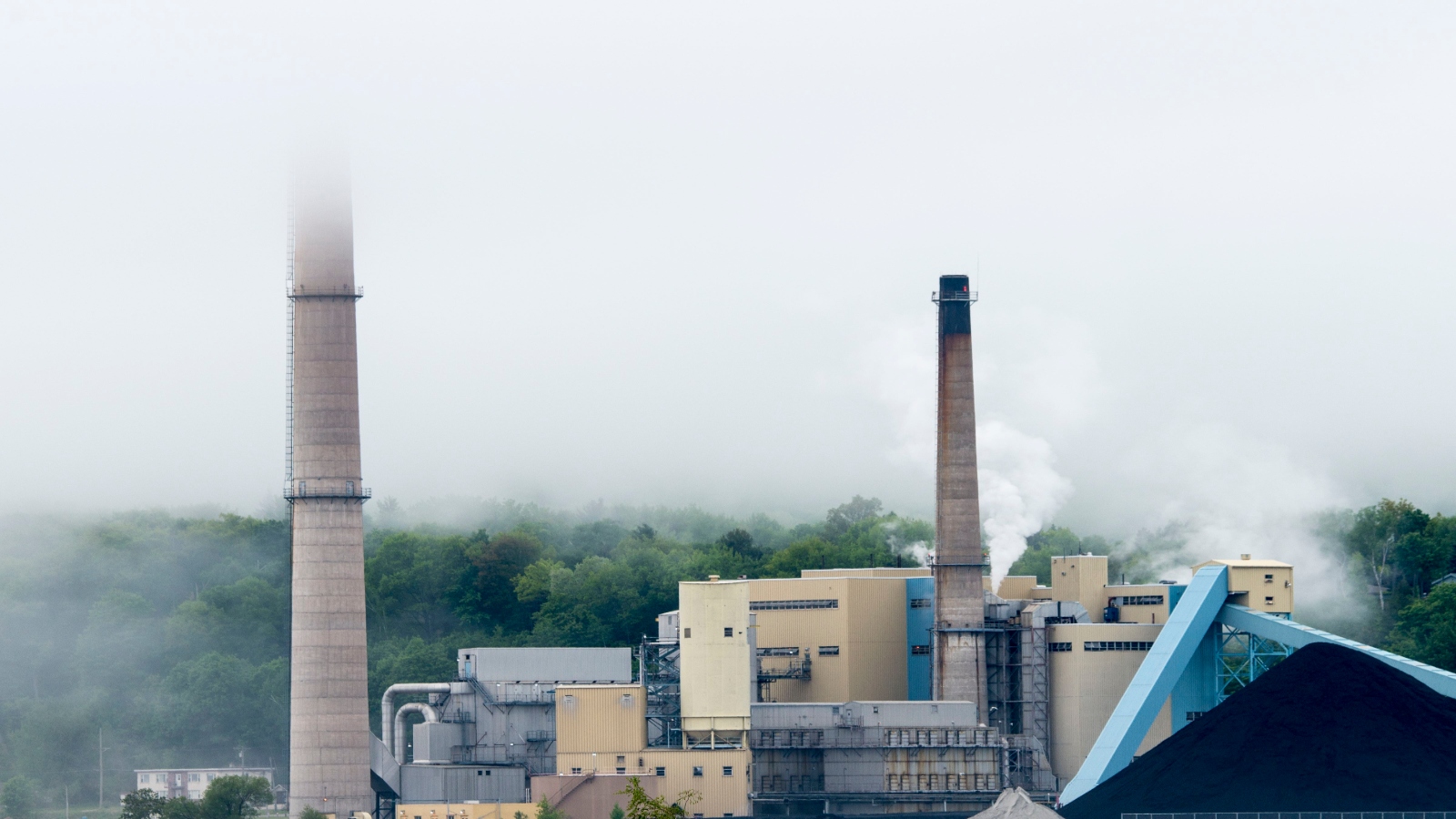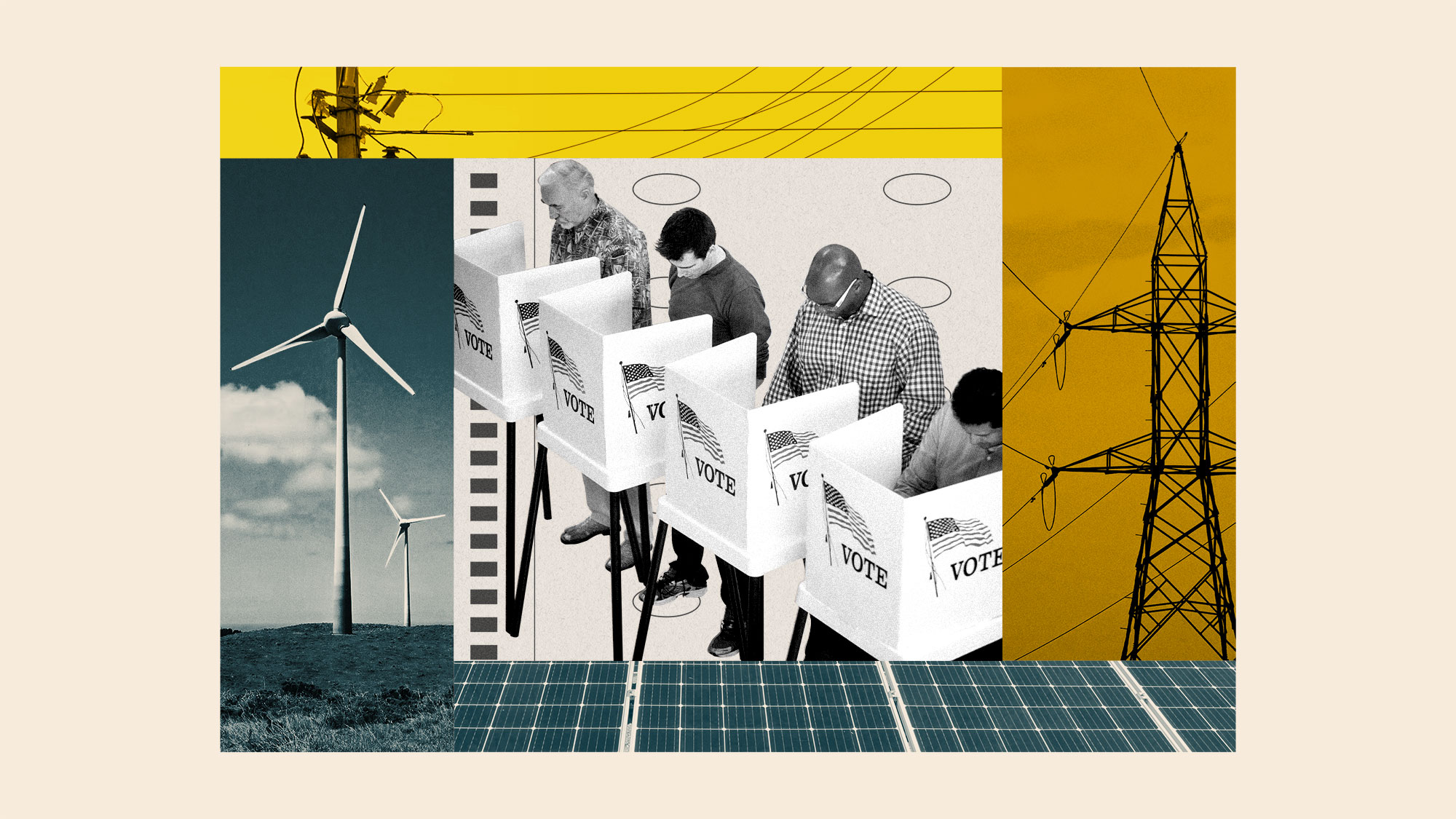Michigan wants to fast-track renewable development. Local townships are suing.
November 27, 2024
This coverage is made possible through a partnership with Grist and Interlochen Public Radio in Northern Michigan.
A lawsuit is challenging how the state of Michigan plans to approve large renewable energy projects, just weeks before a new law is set to go into effect.
About 80 townships and counties are suing the Public Service Commission, the state’s energy regulators, over how it plans to grant siting permissions to renewable projects. The suit, filed November 8, could shape how, and where, solar, wind, and battery storage are developed — and it muddies the process for projects to be approved in the meantime.
Last year, Michigan’s Democrat-controlled Legislature passed a bundle of ambitious climate policies, including changes to the application process for large renewable projects. One of those laws, Public Act 233, allows the state to greenlight utility-scale renewables — like solar arrays of at least 50 megawatts — that in the past could have been slowed or blocked by local governments. The bill passed on promises that it would help meet clean energy goals and reduce greenhouse gas emissions by providing developers with additional paths forward.
Renewable energy advocates had high hopes that it would mark a turning point for Michigan, which has a deep history of local control. In crafting PA 233, lawmakers followed the example of states like Illinois that in recent years have worked to streamline permitting and curtail local governments’ power to restrict renewables.
“I think there was a huge amount of relief on the part of landowners, who have had options agreements and contracts to participate in wind and solar projects, but have been blocked from getting lease payments, essentially, by local governments,” said Matthew Eisenson, a senior fellow at the Sabin Center for Climate Change Law at Columbia Law School. Eisenson has argued for regulators to clarify Michigan’s law to ensure projects are protected from local restrictions. According to the Sabin Center, by the end of 2023, at least 22 clean energy projects had been stalled throughout the state by local governments (though some have since moved forward) and at least seven townships had placed severe restrictions on developing industrial solar in areas zoned for agricultural use.
Critics of the law, meanwhile, allege that it wrests control away from the people who live in these areas, and the local governments that know what’s best for their communities.
Legal challenges to Michigan’s new climate laws weren’t exactly unexpected; an effort to repeal the siting law entirely failed earlier this year, because organizers didn’t collect enough signatures to put it to a vote. But this latest appeal in Michigan has gained national attention, with the climate news site Heatmap News writing that it may be “the most important legal challenge for the renewables industry in America.”
The lawsuit is challenging the Public Service Commission’s plans to implement the renewable siting law, not the law itself. And as other states consider permitting reform — and whether to keep big renewable projects under local or state control — such legal actions could be easier than trying to repeal an entire law, Eisenson said: “There are more options.”
This latest legal challenge was filed after the Public Service Commission announced how the new law for approving project sites would work — a process that involved months of public engagement by the commission in an effort to clarify the rules, including what, exactly, local governments need to have on the books to get the first say on a proposed project.
The lawsuit says the commission’s regulators didn’t follow the proper rulemaking procedures to issue such requirements, and that they undermined the local control that’s baked into PA 233. In particular, the suit challenges the commission’s definition of a “compatible renewable energy ordinance” — a local law that complies with specific state guidelines. PA 233 stipulates that renewable project developers first apply locally as long as the government has a compatible ordinance. If that local ordinance is more restrictive than state law, developers can instead apply directly to the state for approval.
That left some big questions.
Sarah Mills, a professor of urban planning at the University of Michigan who researches how renewable energy impacts rural communities, said while parts of PA 233 are clear — such as the sections on setbacks, fencing, height, and sound — others are murky.
“There’s a whole bunch of things that are traditionally regulated for renewable energy projects that are not mentioned in the law,” she said, like whether local governments can require trees and bushes or ground cover.
The Public Service Commission claims that for a local ordinance to be compatible, it can’t include restrictions on things not included in the law. The plaintiffs behind the appeal disagree.
“That’s not the state of the law, and frankly, it rewrites the legislation, because it doesn’t say that,” said Michael Homier, an attorney with the firm Foster Swift Collins & Smith, who is representing the plaintiffs.
What it comes down to, Homier said, is the scope of the commission’s authority: While he acknowledges regulators can still weigh in on applications, the suit challenges the commission’s broader interpretation of how the law should work.
A commission spokesperson said they couldn’t comment.
Under the commission’s order, only the local government that is zoning a renewable project needs to be considered when granting an approval. But the lawsuit argues that when more than one jurisdiction is affected — like when a county overlaps with a township — both entities should be included in the decision-making.
Mills points out this would affect how much money would flow to local communities from these projects. The state’s law says communities where large projects are located would receive $2,000 per megawatt, along with any required legal fees, which the developer would pay.
“If the affected local unit of government isn’t only the zoning jurisdiction, then the developer would need to pay $2,000 to the county and to the township. So it would be $4,000 per megawatt,” Mills said, in which case “developers are going to have to pay more money.”
Those represented in the appeal are a minority of local jurisdictions; Michigan has 83 counties and more than 1,200 townships. Many are to the south and around the agricultural region in the east colloquially called “The Thumb,” though a few are farther north.
Watchdog groups that track efforts to oppose renewable energy projects say legal challenges are part of coordinated opposition to such development.
“The lawsuit is an extension of ongoing efforts by anti-renewables interests to thwart clean energy in Michigan, and seeks to open the door to poison-pill local rules that effectively prohibit renewables development,” said researcher Jonathan Kim of the Energy and Policy Institute in an email.
In Michigan, debates over large-scale clean energy projects have been acrimonious, and have had consequences for elected officials. Douglass Township, with a population of a little over 2,200, held a recall election in 2022 — part of a wave of unrest in Montcalm County driven by opposition to renewables. “So our community was totally behind us working on ordinances that would protect them from industrialized wind and solar energy,” said Cindy Shick, who won the race for township supervisor as part of the recall.
The state’s recent siting law drastically diminished the local control they had crafted, according to Shick, and the commission’s order eroded it even further, which is why the township joined the lawsuit.
Reasons for opposing utility-scale renewable projects vary widely, from concerns about a loss of agricultural land to the effects such developments would have on the environment. Other critics point out that companies too often fail to consult tribal nations and ignore Indigenous rights when pursuing projects.
Still, others in support of more development say it’s a boon to communities and people looking to make money by leasing their land. Clyde Taylor, 84, is a farmer who grows hay in Isabella Township in central Michigan. The township is among those suing, though Taylor hasn’t looked into the lawsuit.
He’s allowing a company to build a solar array on around two dozen acres of his land. While he has “mixed feelings” about the state’s new siting law, he generally supports it.
“We have to have laws on the books to make this thing fly,” he said, referring to renewable energy adoption. “And they’ve made it fair enough,” with solar projects under 50 megawatts staying in local control.
Ultimately, the local governments involved in the lawsuit are asking the Court of Appeals to cancel at least part of the commission’s order. The law is set to go into effect on November 29. If the appeal is successful at halting the Public Service Commission from implementing the order, it’s unclear how PA 233 would work as the suit moves through the court, a process that could take more than a year.
Search
RECENT PRESS RELEASES
Related Post





